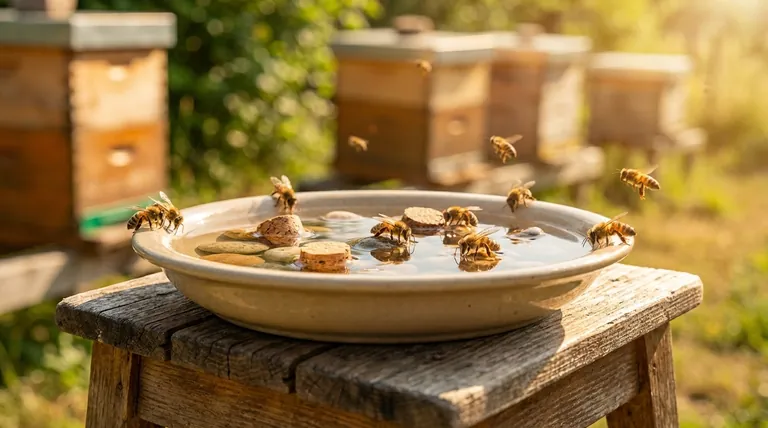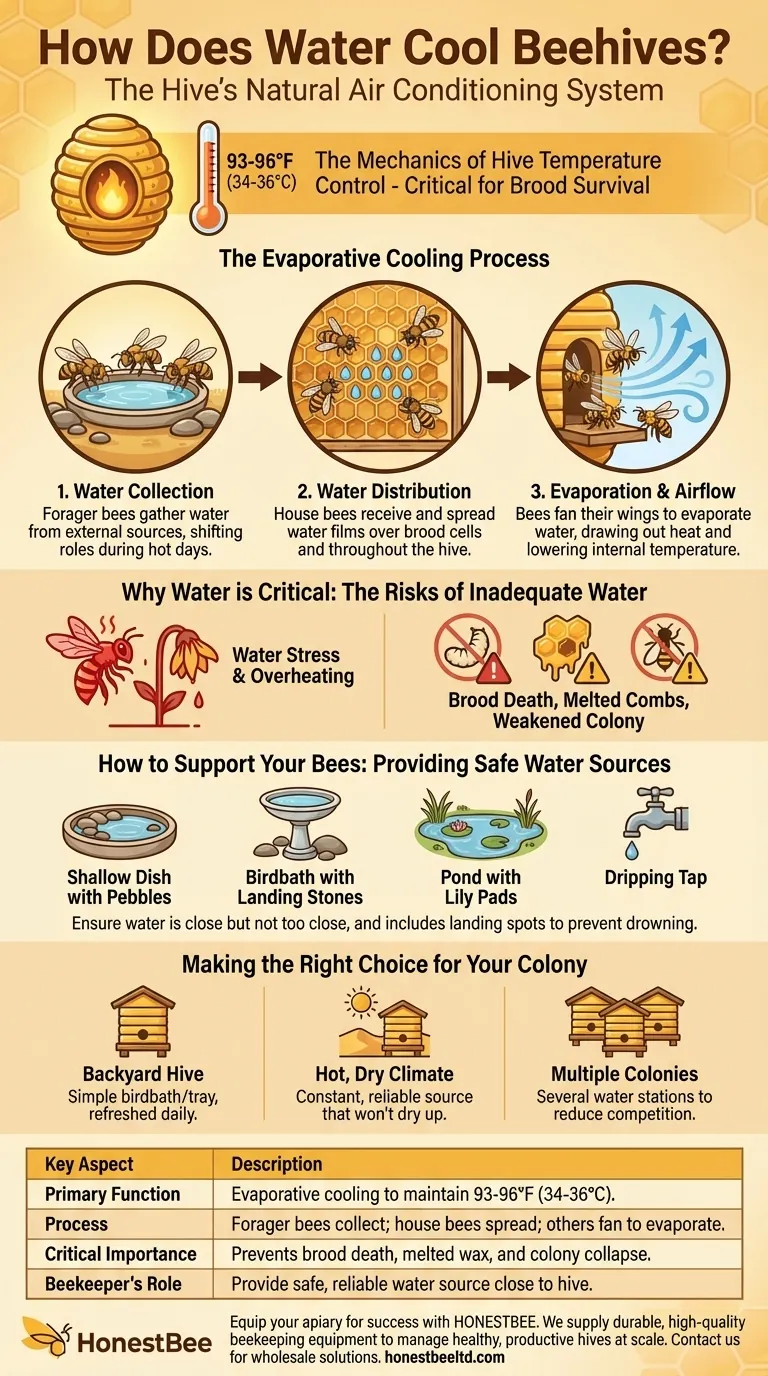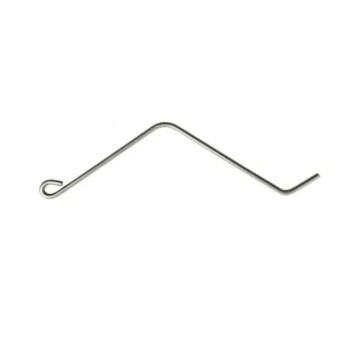Bees use water as their hive's air conditioning system. On hot days, when the internal temperature of the hive risks rising to dangerous levels, worker bees collect water and bring it back to the colony. They then use this water for a sophisticated process of evaporative cooling, effectively lowering the hive's temperature and protecting the delicate brood and honey stores within.
A honeybee colony's survival through intense heat depends on its ability to regulate its internal temperature. Providing a reliable water source is one of the most critical actions a beekeeper can take to support this natural, life-saving behavior.

The Mechanics of Hive Temperature Control
A honeybee hive is a finely tuned environment. The bees work constantly to maintain a stable internal climate, especially in the brood nest where the young are raised.
Why Hive Temperature is Critical
The brood nest, where the queen lays her eggs and larvae develop, must be kept at a remarkably consistent temperature, typically between 93-96°F (34-36°C).
If the temperature rises above this narrow range, the developing larvae and pupae can die, jeopardizing the future of the entire colony. Excess heat can also cause beeswax to soften and honey to melt from the combs.
The Process of Evaporative Cooling
Bees cool their hive using the same principle that makes sweating effective for humans. It is a coordinated, multi-step process.
First, designated forager bees collect water from external sources. Back at the hive, they pass this water to house bees who spread thin films of it over the caps of brood cells or deposit droplets throughout the hive.
Next, a team of bees positions itself near the hive entrance and fans their wings in unison. This creates a current of air that flows through the hive, causing the water to evaporate and drawing heat out with it.
The Role of Specialized Water Foragers
On hot days, the colony will shift its workforce priorities. Bees that would normally be foraging for nectar or pollen are reassigned to the urgent task of collecting water.
The efficiency of these water foragers is paramount. The closer and more reliable the water source, the less energy the bees must expend and the more effective their cooling efforts will be.
Understanding the Risks of Inadequate Water
Failing to support the bees' need for water carries significant consequences, especially during periods of high heat.
The Cost of Water Stress
Without a readily available water source, bees must fly farther, which consumes precious energy and time. This stress reduces their ability to forage for food and defend the hive.
In extreme cases, a lack of water means the bees cannot adequately cool the hive. This can lead to brood death, melted combs, and a severely weakened or lost colony.
Overheating as a Silent Threat
A beehive can overheat surprisingly quickly on a hot summer day. The colony's internal fanning and cooling efforts are energy-intensive and not always enough to combat extreme or prolonged heatwaves.
Providing water is not just a convenience; it is a critical support system that allows the bees to dedicate their energy to the task of cooling rather than the exhaustive search for water itself.
How to Support Your Bees
As a beekeeper, you play a vital role in the colony's ability to manage its temperature. Your primary job is to ensure a safe and reliable water source.
What Makes a Good Water Source
The ideal water source is close to the hive but not so close that it attracts pests or becomes contaminated with bee waste.
Crucially, the water source must be safe. Bees can easily drown in open water. A shallow dish with pebbles, marbles, or corks provides landing spots for them to drink safely. Birdbaths, ponds with lily pads, or even a slowly dripping tap can also serve this purpose effectively.
Making the Right Choice for Your Colony
Your approach to providing water should match your environment and the scale of your apiary.
- If your primary focus is supporting a backyard hive: A simple birdbath with landing stones or a shallow tray of water, refreshed daily, is a perfect solution.
- If your primary focus is managing hives in a hot, dry climate: Ensure a constant and reliable water source that will not dry up, as this is a mission-critical resource for colony survival.
- If your primary focus is managing multiple colonies: Consider several water stations to reduce competition and ensure every colony has easy access without having to travel far.
By providing this simple resource, you empower your colony to regulate its own environment and thrive even in the most challenging conditions.
Summary Table:
| Key Aspect | Description |
|---|---|
| Primary Function | Evaporative cooling to maintain hive temperature (93-96°F / 34-36°C). |
| Process | Forager bees collect water; house bees spread it; other bees fan wings to evaporate it. |
| Critical Importance | Prevents brood death, melted wax, and colony collapse during heatwaves. |
| Beekeeper's Role | Provide a safe, reliable water source close to the hive to reduce bee stress. |
Equip your apiary for success with HONESTBEE.
As a commercial apiary or beekeeping equipment distributor, ensuring your colonies have the resources to thrive is your top priority. The right equipment is fundamental to supporting natural behaviors like temperature control.
HONESTBEE supplies the durable, high-quality beekeeping supplies and equipment you need to manage healthy, productive hives at scale. From hive components to protective gear, our wholesale-focused operations are designed to support your business's growth and efficiency.
Let's discuss how we can support your operation. Contact our team today to learn more about our product catalog and wholesale solutions.
Visual Guide

Related Products
- HONESTBEE Advanced Ergonomic Stainless Steel Hive Tool for Beekeeping
- Professional Dual-End Stainless Steel Hive Tool for Beekeeping
- Long Langstroth Style Horizontal Top Bar Hive for Wholesale
- Professional 3-Bar Frame Grip with Integrated Hive Tool
- Professional Pneumatic Wire Embedder for Beehive Frames
People Also Ask
- How should beekeepers handle bees when using a hive tool? Master Calm, Deliberate Techniques
- What are some common uses of a hive tool? Essential Multi-Purpose Tool for Every Beekeeper
- What is the hole in a hive tool for? A Multi-Tool for Apiary Repairs and Maintenance
- Why is it important to compare the progress of different hives? A Beekeeper's Key Diagnostic Tool
- Why do hive tools have a hole? Unlock the Secret to Efficient Beekeeping



















